Myra, Turkey 15 – 5/2014
Following our short visit to Patara, the birthplace of the man we know as Santa Claus, we couldn’t resist stopping in Myra to see the church where he spent much of his life and where he died. According to one source, the earliest substantiated records of Myra was in 168 B.C.
Fast forward to more recent times, in 325 A.D. the area became a Roman province district with Myra as its capital. The bishop of Myra at that time was Saint Nicholas, though he was not canonized until after his death.
Well, as time marched on, the harbor silted up and various earthquakes and invasions left the town and the church in ruins or the state of being rebuilt. Saint Nicholas was and is of great importance to the Christian world, especially to the Greek and Russian Orthodox. In his lifetime he had a wide reputation for performing miracles and he was known as the protector of children, young people, seamen, travelers and the poor. The St. Nicholas’ tomb in Myra was a popular place of pilgrimage. As a significant religious site, Myra enjoyed considerable commercial benefit because pilgrims needed to be housed, fed, and otherwise provided for.
Italian merchants in both Venice and Bari, Italy, saw an opportunity to bring such advantage to their cities. In 1087 Bari sailors and merchants on their way home from Antioch broke open the tomb with an iron bar. The sailors spirited most of the bones away to the ship, escaping just ahead of the townspeople coming in hot pursuit.
Now here’s a weird part that I had never heard of. When the sailors first arrived at the church they asked the monks where the “manna” was extracted. What’s manna? According to the St. Nicholas Center’s website, manna is a pure water formed in the tomb of the Saint. One might guess that it is some form of condensation. What’s interesting is that after the remains of St. Nicholas were transported to Bari and the new crypt was built for the purpose, the “manna” continued to be formed and does so to this day. (In Christianity, the “translation of relics” is the removal of holy objects from one locality to another.) Every year on May 9, the Feast of Translation, (of the relics from Myra to Bari), is celebrated. The Rector of the Basilica, in the presence of a delegate of the Pope, solemnly extracts the crystal vial containing about 50 ml of the pure “santa manna”. The liquid is mixed with holy water and distributed to the faithful. Conserved in small ampules or beautifully hand-painted bottles, the liquid is taken as a drink or sprinkled on the part of the body that is suffering from an illness.
This phenomenon is not easily explainable. The possibility of infiltration of water from the outside has been absolutely eliminated and excluded. It has been proven that the casket containing the bones of the Saint is totally impermeable. Notwith-standing the various solutions that have arrived from numerous hypothesis, whether they may be supernatural or natural expla-nations for the phenomenon, the “manna” is an authentic relic, because it is a liquid that remained in contact with the bones of the Saint. This explains why there is such a great devotion to this day. (In religion, a relic usually consists of the physical remains of a saint or the personal effects of the saint or venerated person preserved for purposes of veneration as a tangible memorial.)
Apparently a similar invasion from a fleet of Crusader ships coming from Venice in 1099 also managed to find a copper urn hidden under the St. Nicholas church floor which was engraved ”Here lies the Great Bishop Nicholas, Glorious on Land and Sea.” It was the rest of the bones that the Bari soldiers had left behind.
Back to Myra, in the late 12th century or early 13th century a natural disaster, probably an earthquake, caused a shift in the bed of the River Miro’s that resulted in a terrible flood. The city of Myra and the church were filled with muddy floodwater and alluvial silts. Today, the new city of Demre lies approximately 6 meters, (20 feet!), above the ground level of Myra and St. Nichols church. So the church and all its amazing frescoes was completely buried for about 800 years. Some serious digging was needed.
In 1963 the eastern and southern sides of the church were excavated. In 1968 the former tomb of St. Nicholas was roofed over. The floor of the church is made of opus sectile, an art technique popularized in the ancient and medieval Roman world where materials were cut and inlaid into walls and floors to make a picture or pattern. Common materials were marble, mother of pearl, and glass. The patterns on the pavements in the interior of the church are examples of the skilled craftsmanship.
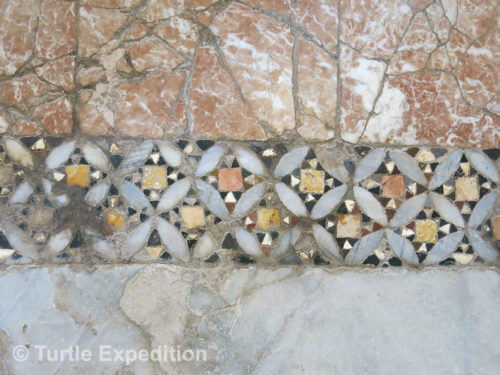
The beautiful opus sextile patterns on the floors and interior walls of the St. Nicholas church in Myra are examples of the skilled craftsmanship.
Wall paintings in the burial chamber of the church date to the 12th century. They contain 15 scenes in the life of St. Nicholas. The dome of the prosthesis chamber used by the clergy for preparation of worship contains 12th century paintings of the holy communion of Christ offering bread and wine to the 12 apostles. Numerous other frescos throughout the church would be best interpreted by a theologist, so let the photos tell the story. Just be amazed that they survived.
After all that, if you’ve read this far, you may still be surprised that Santa Claus does not really live in the North Pole with his reindeer and his elves. He actually came from Asia Minor. To quote the famous radio announcer, Paul Harvey, “And now, you know the rest of the story.” If you really want to know more, check out this fascinating website for all the details: www.stnicholascenter.org
- It was amazing to realize that this beautiful church had been buried under 20 feet of alluvial mud for 800 years.
- In 1968 the former tomb of St. Nicholas was covered with a protective roof.
- Many of the floors in the church are made of opus sextile, an art technique popularized in the ancient and medieval Roman world.
- Opus sextile is the technique where materials were cut and laid into walls and floors to create a picture or pattern during Roman times.
- The dome of the Prosthesis, a chamber used by the clergy for preparation of worship, contains 12th century paintings of the holy communion of Christ offering bread and wine to the 12 apostles.
- Wall paintings in the burial chamber of the church dating to the 12th century contain 15 scenes in the life of St. Nicholas.
- Many of the other beautiful frescoes throughout the church would be best interpreted by a theologist. It is truly amazing that they survived it all.
- The most important restoration was commissioned in the 11th century by emperor Constantine IXth Monomachus and his wife, Empress Zoe. Their pictures were incorporated in this frescoed wall.
- In the 11th century, Empress Zoe and her husband, emperor Constantine IXth Monomachus, commissioned the restoration of St. Nicholas church in Myra.
- The statue in the courtyard of the church shows St. Nicholas with his arms around the children whom he was famous for protecting.
- The base of the statue reads, “16th international Santa Claus Activities & the call for World Peace” “Children on the Path of Peace” 1-7/12/1998
- As we drove by a sarcophagus that had been excavated it was still amazing that the street we were on was 20 feet above the floor level of the once buried St. Nicholas church.



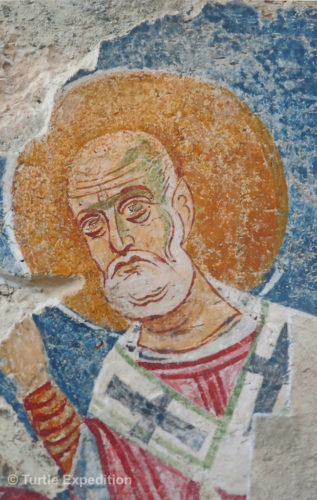
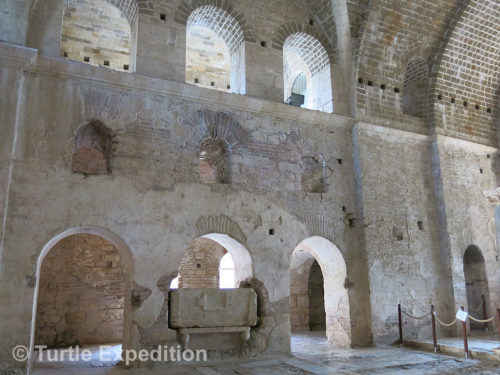
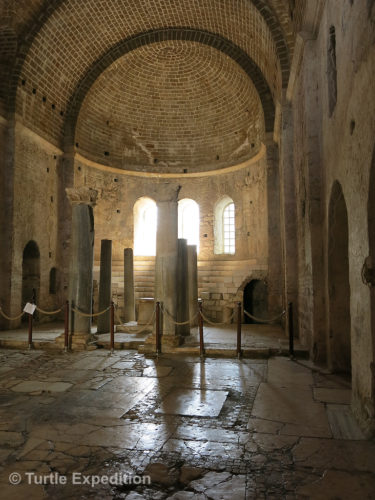
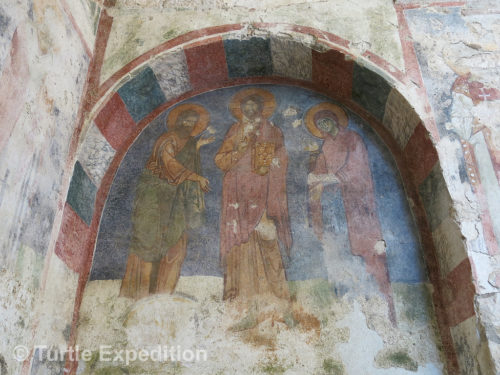
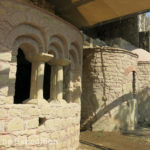
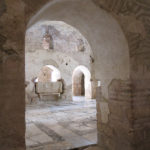
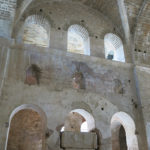
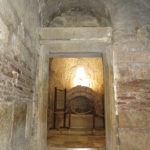
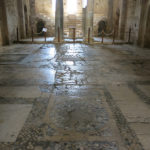
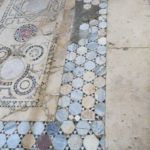
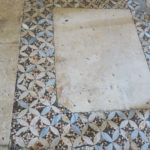
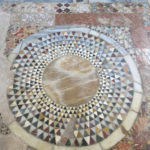
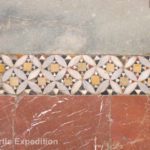
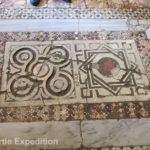
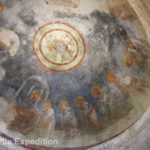
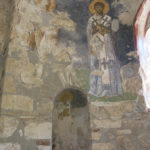
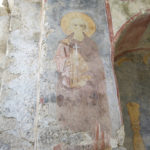
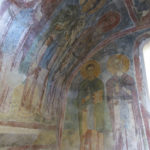
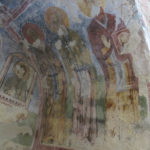
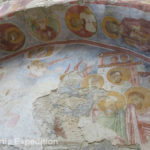
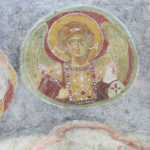
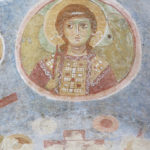
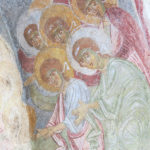
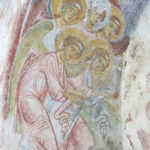
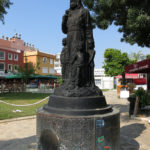
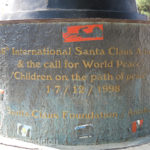
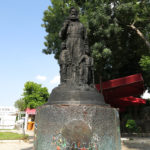
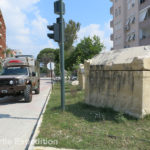





Following our short visit to Patara, the birthplace of the man we know as Santa Claus, we couldn’t resist… https://t.co/MEsFqB0Hb1
David Croyle liked this on Facebook.
Aaron Matthew liked this on Facebook.
Thomas Solimini liked this on Facebook.
David Ross liked this on Facebook.
Erdem Önen liked this on Facebook.
Lisa Sperling liked this on Facebook.
Spencer Barboza liked this on Facebook.
Ildo Costa Nunes liked this on Facebook.
Rick Eells liked this on Facebook.
Ann Trent liked this on Facebook.
James Peterson liked this on Facebook.
Soares Periquito liked this on Facebook.
Bj Hedahl liked this on Facebook.
Indigo Hernandez liked this on Facebook.
Annie Lehmkuhl Hendricks liked this on Facebook.
Joan Fraser liked this on Facebook.
Don Floyd liked this on Facebook.
Linda Emanuel liked this on Facebook.
Kevin Williams liked this on Facebook.
Ben Kinser liked this on Facebook.
Mike Quick liked this on Facebook.
David Macom liked this on Facebook.
Awesome
Lori R. Gaskill liked this on Facebook.
Rankin Jeffries liked this on Facebook.
Thomas Woodson liked this on Facebook.
John Furbee liked this on Facebook.
Paul Crittenden liked this on Facebook.
Douglas Rykerd liked this on Facebook.
Hakan Kakuli Budak liked this on Facebook.
Dave Sunderland liked this on Facebook.
Auf diesem Weg mal en ganz liebe Gruess us de CH.
Und einen lieben Gruss zurück aus San Diego!
Wait a minute. Are you saying Santa Claus is dead? 🙂
Geniel Capondo liked this on Facebook.